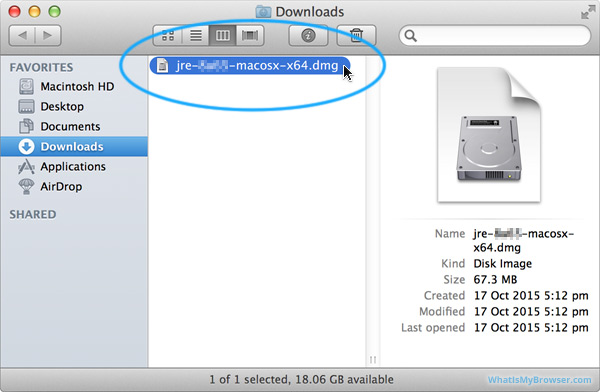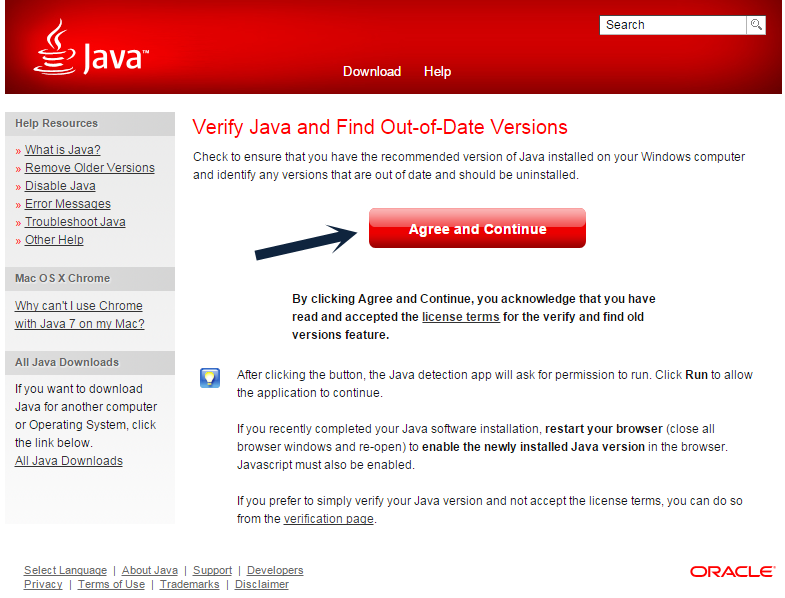

- #New version of java for mac how to
- #New version of java for mac install
- #New version of java for mac full
- #New version of java for mac software
You can see a comparison matrix here which breaks down the differences between most of the modern JDK distributions. The team at Azul really does a great job at keeping the installation as easy as possible. dmg installer to get it running on your Mac. For additional hardware support, we also want to include the Java FX package (aka JDK FX).įor these reasons, I recommend the Azul Zulu Java 17 (LTS) with JDK FX package. Your chosen distro also must be compatible with ARM 64-bit v8 (as we discussed earlier, this is the M1 chip’s arch). To avoid any unforeseen issues, you also want to have as much “Java stuff” supported in the distribution that you do install.
#New version of java for mac full
You can run the latest version of the JDK as they have full backward compatibility down to version 8 (as of the time of writing in 2022 here). But I’ll try and distill it down to the simplest happy path. LTS? Bits? Native Alpine? There’s alot to consider.
#New version of java for mac install
Now we’re ready to install a functional version of the JDK and add it to our Jenv. This will make it so that your mvn commands will call the same JDK version that you have configured with Jenv. You guys like Maven right? It even has a plugin for that. $ echo 'eval "$(jenv init -)"' > ~/.zshrc $ echo 'export PATH="$HOME/.jenv/bin:$PATH"' > ~/.zshrc Note that this assumes you have Homebrew installed and are running the default macOS Z shell (zsh) that comes with all post-Mojave flavors. And so we need to immediately put this in our toolbelt and get it installed. It’s an open-source tool that will allow us to manage several JDKs on Linux-type systems, macOS being one of them. It’s just short for “Java environment manager”. Additionally, any Java libraries that touch hardware (I’m looking at you JavaFX, which can use hardware acceleration), would need their own port as well.Īnd so it stands to reason that we need to pay alot of close attention to any Java installations, and we can expect a bunch of issues to pop up if we try to blindly recreate an Intel-based Macbook Java environment within our new M1. These are breaking and significant changes which occurred in the span of just a single generation – the entire JDK had to be ported very quickly for compatibility. Its architecture differs drastically from the old Intel-based Macbooks. It has both a CPU and GPU on the same block. It’s their first RISC (Reduced Instruction Set Computing – and no pun intended). The M1 itself is an ARM-based SoC (System on a Chip).

We also have several third-party open-source tools that rely on Java as well, most importantly for our various login integrations (Okta->DUO->AWS, OneLogin->WebApp, etc) that we need to be able to do just about anything for our jobs.Īnd so with this mix of a fresh M1, our required tooling, their dependencies, and our local development environment, the fun truly begins. This means we have to hunt and gather open-source Java to run our platform upon both locally and in the cloud. However, we do not run a paid/licensed Oracle JDK. No knock on that – it’s great hardware and it is extremely power efficient, requiring no fans whatsoever (finally, silence). I’m a senior engineer on the Java team, and it goes without saying that all my teammates need to quickly and reliably get a modern JVM running on their systems.Īll new hires are given M1 Macbook Pros.

These steps apply equally to all other JDK and JRE releases. Note: These steps use the JDK 8u231 macOS installer as an example.
#New version of java for mac how to
The following steps show you how to install a non-notarized JDK or JRE.
#New version of java for mac software
If you want to install and test earlier versions of the JDK or JRE on macOS 10.15, this document explains some expect warnings and how to proceed.Īs of the time when this article was written you can still install and run non-notarized software on macOS 10.15 systems by modifying your security preferences. JDK 14 is the first release that complies with the new macOS 10.15 hardening and notarization requirements. See Notarizing Your App Before Distribution. When you install or run software for the first time, Gatekeeper verifies that the software has been notarized. With macOS 10.15, Apple introduced new application security checks, which are used by Gatekeeper to verify the contents of distributed software.


 0 kommentar(er)
0 kommentar(er)
